- 22 May 2015
- Magazine
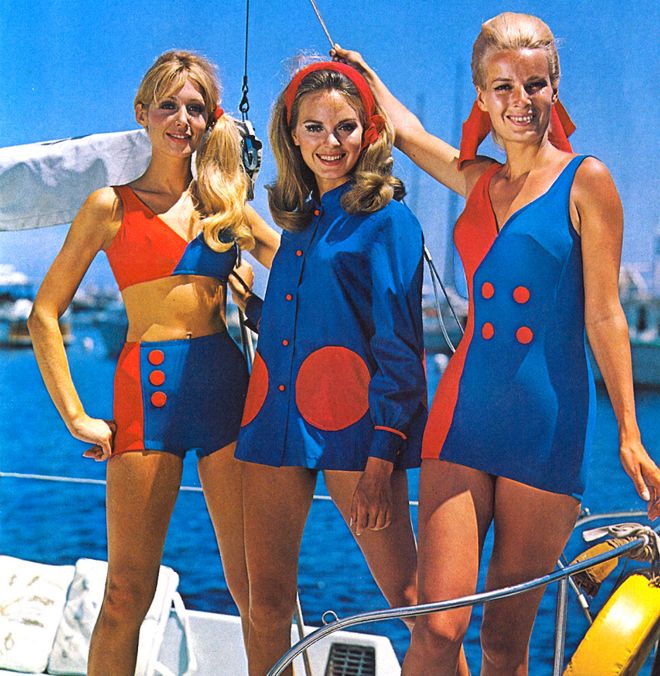
Over a century of swimwear is being celebrated in a new exhibition. Things have been getting smaller.
"In the 50s, all young girls aspired to look like their mothers. In the 60s, the big change was the mothers wanted to look like the daughters," quips acclaimed fashion designer David Sassoon.
Now retired, Sassoon - creator of eveningwear for Princess Diana and other members of the Royal Family - is surrounded by colourful top-end beach clothing from the 1920s and 30s.
He is helping put the finishing touches to London's Fashion and Textile Museum's new summer exhibition, Riviera Style, which looks at how resort and swimwear fashions have changed since 1900.
The rules regarding beach etiquette have changed tremendously he says. "Today you can practically walk on a beach with nothing on."
One of the exhibition's curators, Dr Christine Boydell - a design historian from De Montfort University, Leicester - agrees. The changing styles tell you a lot about morality in the past, she says, "what was permissible to show and what wasn't."
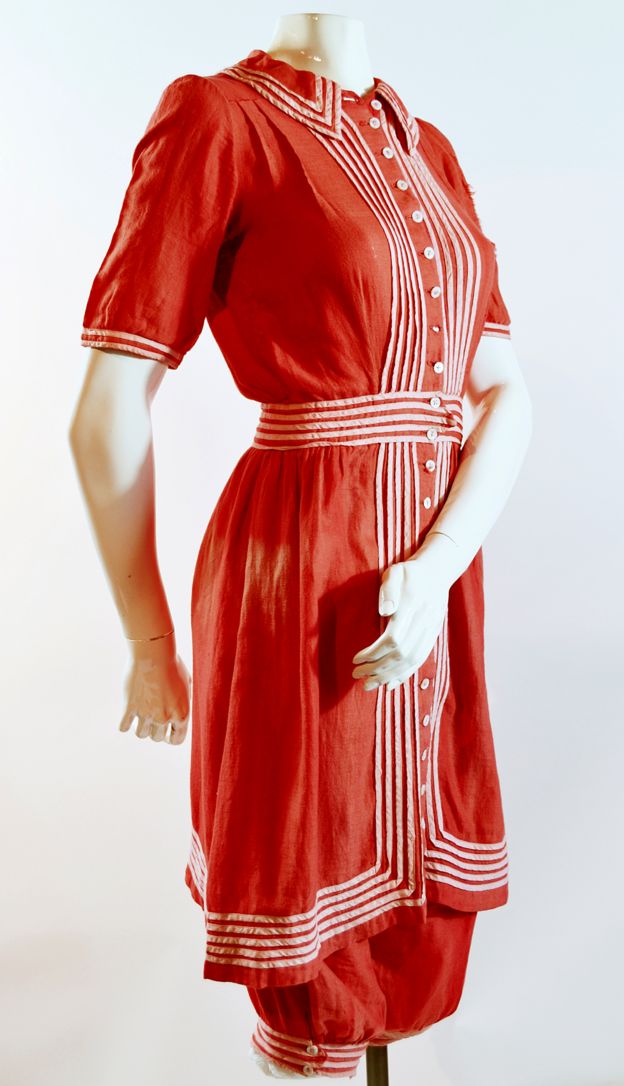
At the turn of the 20th Century women wore bathing dresses at the seaside - which were not at all conducive to swimming.
Made from woven wool, they would be heavy and itchy when wet. They covered shoulders and stretched to just above the knee. Matching bloomers would be worn underneath, often with black stockings.
Christine Boydell says for a time bathing corsets would also have been worn underneath - making the whole experience of taking a dip even more uncomfortable.
Men too would also have to be conscious of what was on show.
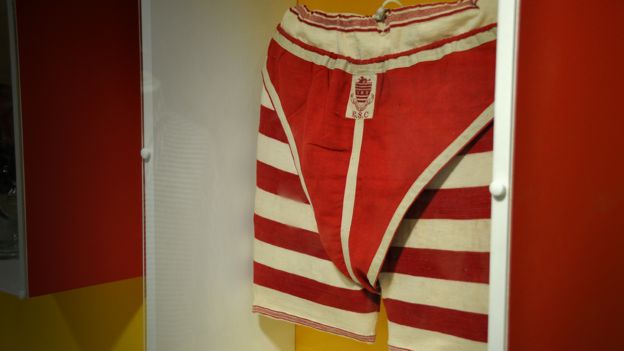
These red and white stripy stockinette shorts would have lost their shape when wet - so men would have also worn the red pair of pants, known as "athletes", over the top to cover their modesty.
Boydell explains that in the run up to the 20th Century it was really only men who swam - naked on segregated beaches.
But that soon changed - beaches became mixed and there was a need to cover up. And, like women, men were expected to cover their chests.
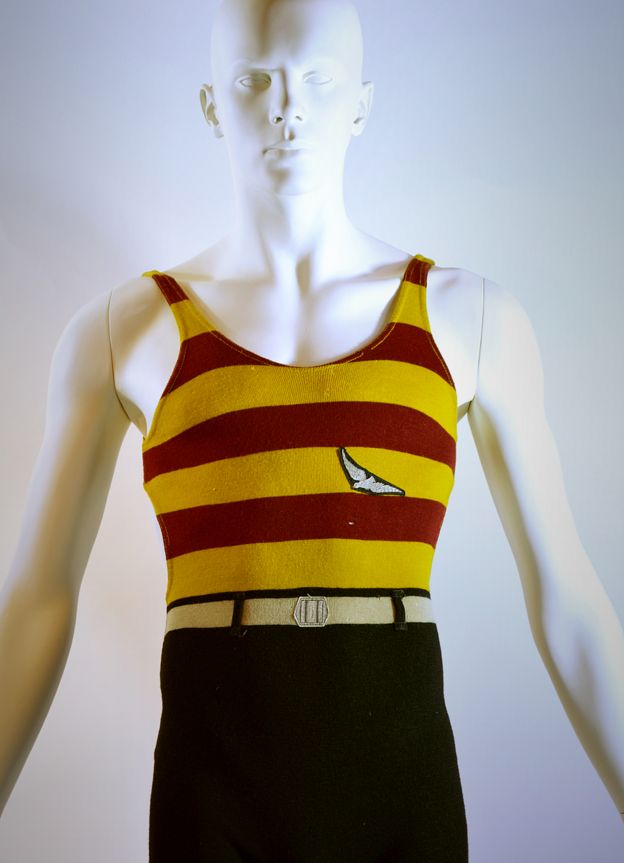
This men's swimsuit from the 1930s left shoulders uncovered, and pushed etiquette boundaries at the time.
It was knitted - in a tight stitch, similar to that on the round cuffs of modern-day cardigans or jumpers.
The belt was there for a practical reason not just as a style accent, says Boydell. It would stop the garment sagging when wet.

The popularity of beach holidays and day trips - for people from all walks of life - grew between the wars.
In 1900 working class people who visited the seaside would have been fully clothed, says Boydell. The most they could hope to do in the water was have a paddle.
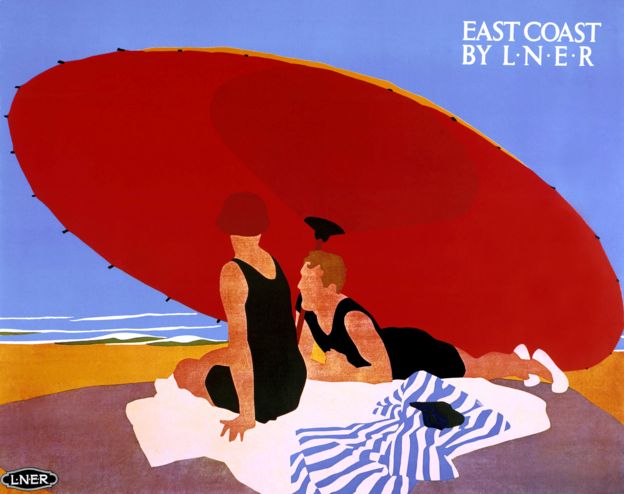
But by the 1930s, as whole factories closed down for a week or fortnight each summer, spending several days by the sea was achievable for more people.
Railway company posters made the UK coast look like the French Riviera.
There would have been sunny days, but these stylised views were perhaps a step or two away from the reality of a blustery day in Scarborough or Bridlington.

Designers and manufacturers realised there was a mass market for beachwear - but they also tried to protect the notion that spending time at the seaside was glamorous and aspirational.
There was a trend for beach pyjamas - which could be worn while taking cocktails in the evening.

By the late 1930s several UK companies were trying to work elastic into fabrics.
Knitted garments lost their shape easily and were not comfy to wear when wet - and in the 1940s and 50s, as fashions changed, there was demand for swimsuits which could show off bodily curves.
This women's swimsuit is made from lastex - a type of satin elastic - with a corset tailored cut.
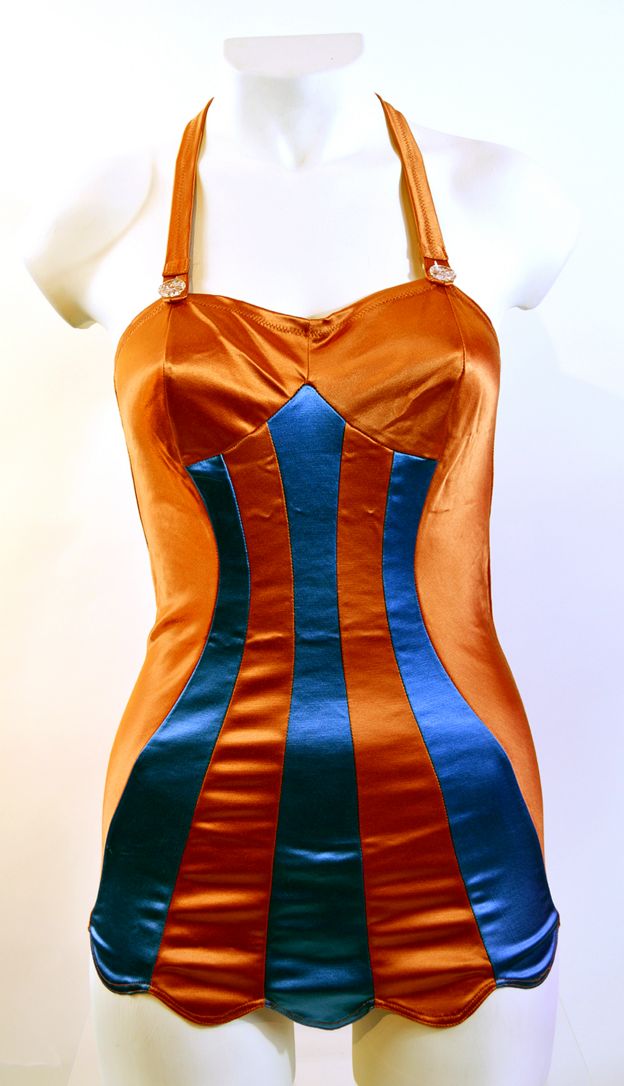
Designers had to "remember to flatter", says David Sassoon. The costumes could be unforgiving for some body shapes, he adds, "because there are very few places to hide".
"A lot of beachwear is based on corsetry, it has to stay up, stay in shape, stretch and mould."
This black and white image shows so called "telescopic" technology - where elastic was sewn inside swimsuits both horizontally and vertically.
The parallel elastic thread in both directions resulted in ruching.
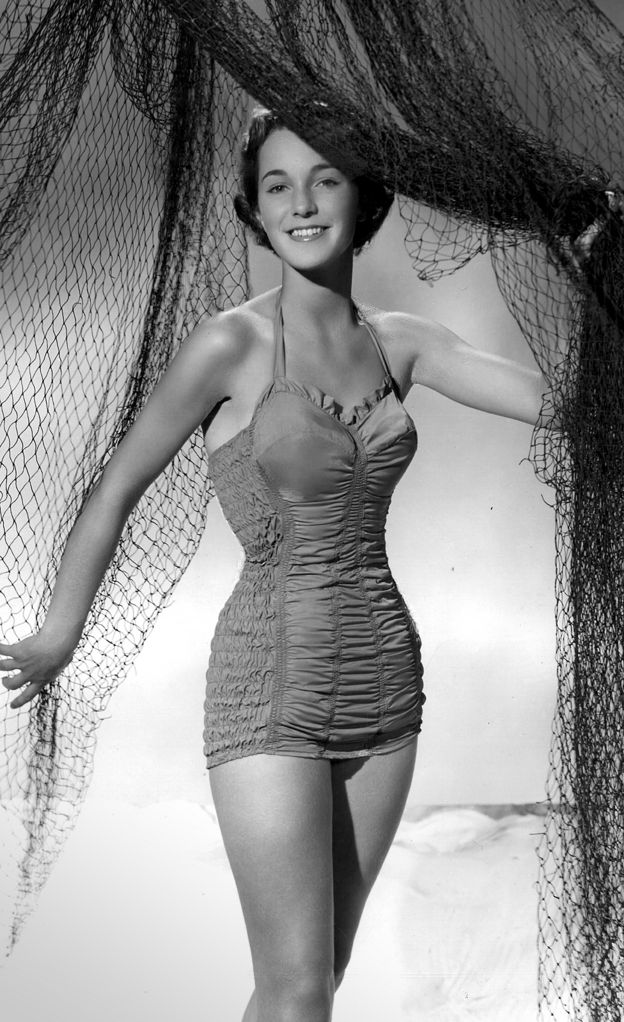
A licence to use the telescopic technique was taken out by swimwear manufacturer R and W H Symington with the aim, says Christine Boydell, of creating "one size fits all" garments.

Then came another stretchy development - nylon.
Often combined with the telescopic technique, it made garments much lighter and quick to dry.

This yellow swimsuit carries a 1951 Festival of Britain motif.

Swimwear became a factor in the beauty contests of the 50s, 60s and 70s. In 1965, Diana Westbury was crowned Miss Great Britain by comedians Morecambe and Wise in the Lancashire resort of Morecambe.
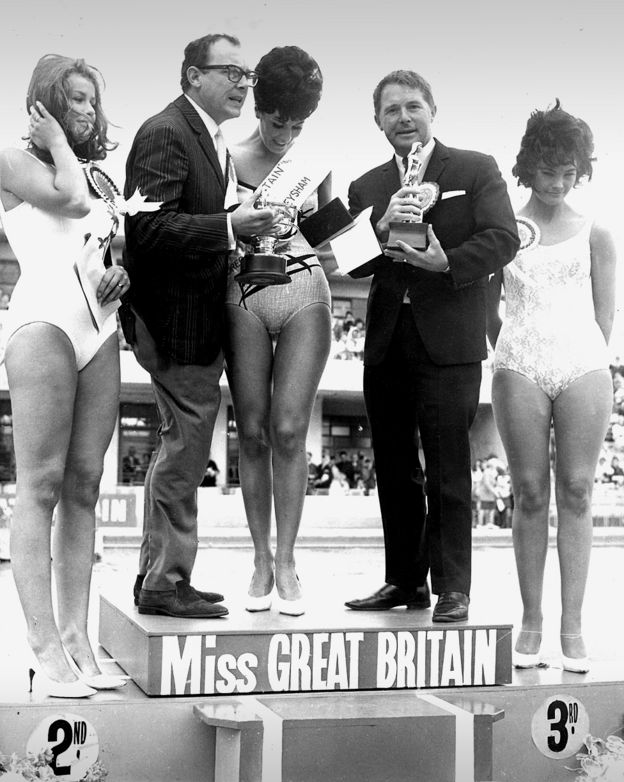
Rather than have a swimsuit specially-made, as was the usual practice, she bought this ready-made version by R and W H Symington.
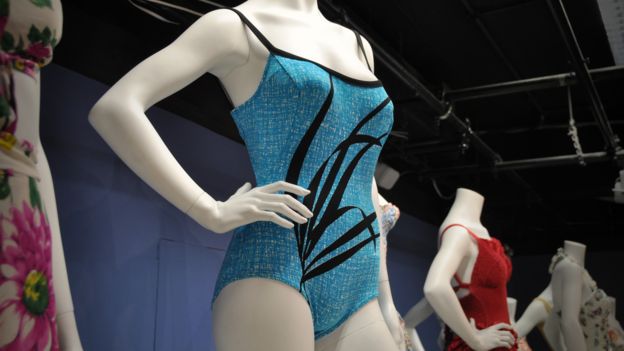
The exhibition has an identical one.
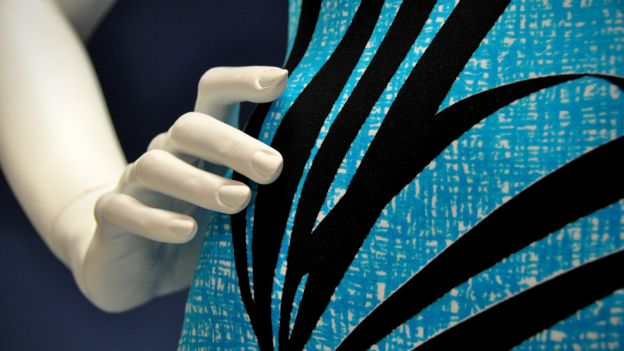
Cultural changes in the late 1960s also found their way to beach fashion.
This collection of psychedelic swimsuits, from the R and W H Symington catalogue from the time, were created by New York designer Oleg Cassini.
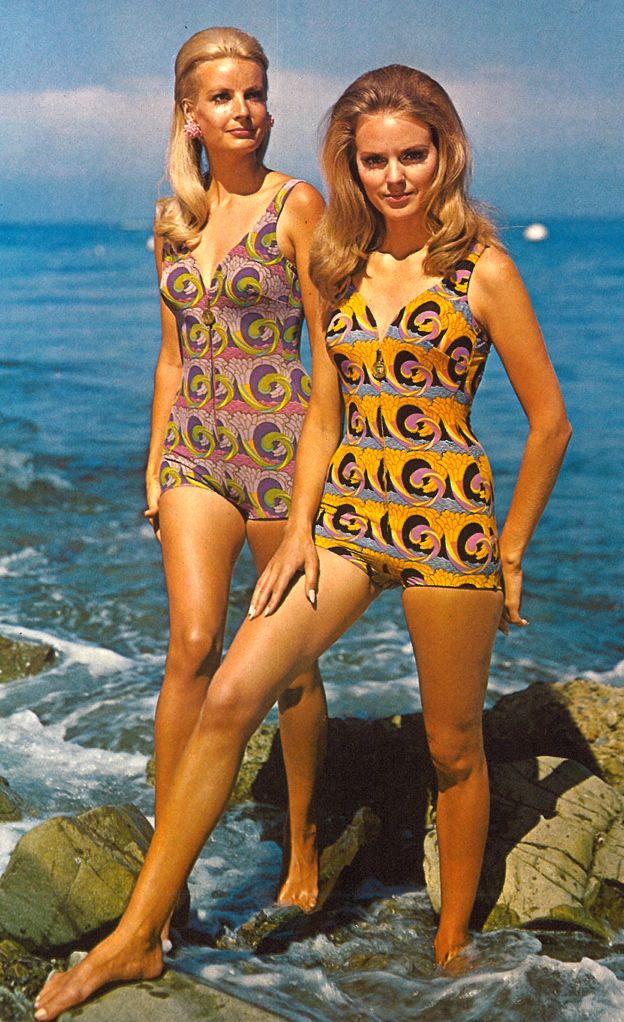
The bright, vibrant colours would have been worn on beaches around the Mediterranean - as foreign package holidays started to become popular.
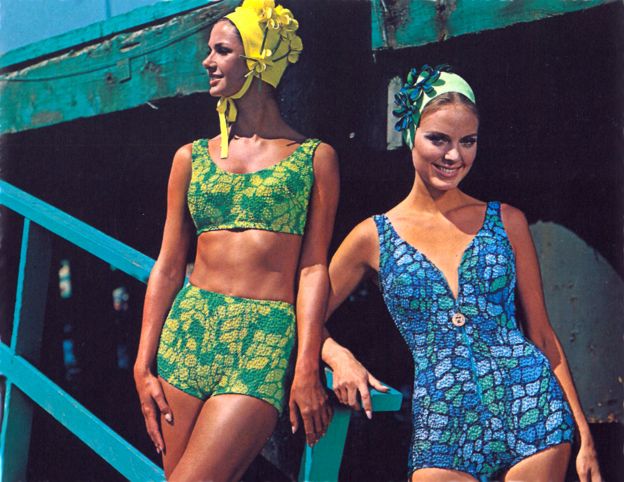

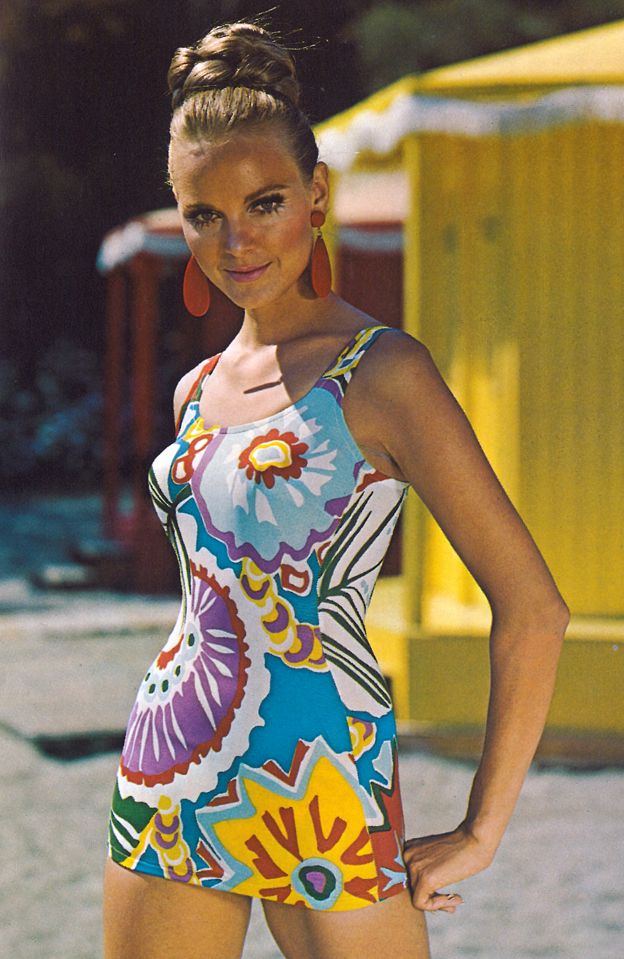

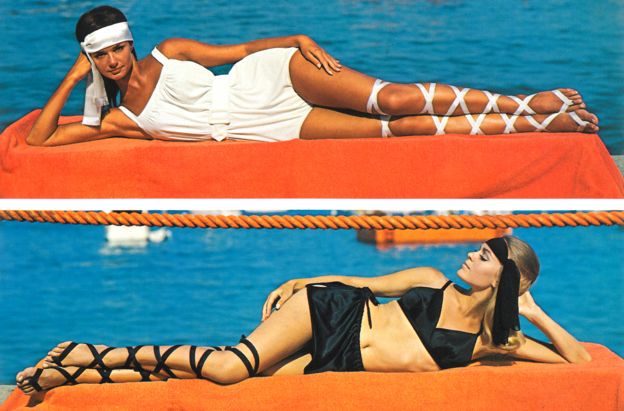
The colourful bathing hats, adorned with rubbery jewels and flowers, did sell - says Christine Boydell.
"They might look ridiculous now - but they are great fun."
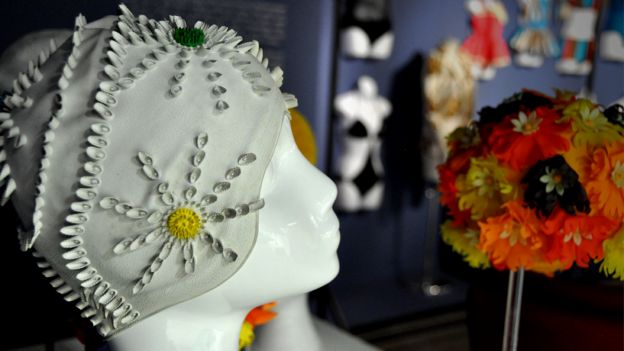
At the start of the 21st Century, swimwear designs are supposed to be "sensual and sexy" - for both women and men.
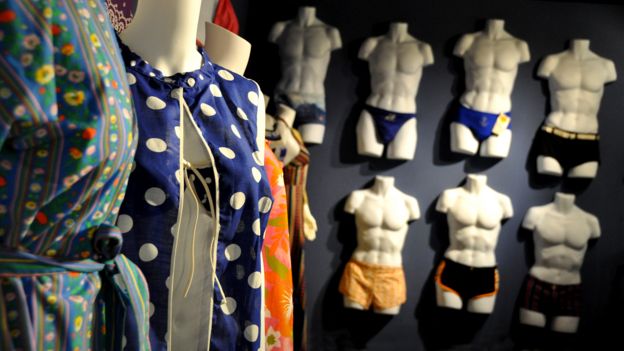
On show at the museum is a pair of light blue men's trunks sold on the high street by H&M and inspired by those worn by Daniel Craig, as James Bond in Casino Royale in 2006.
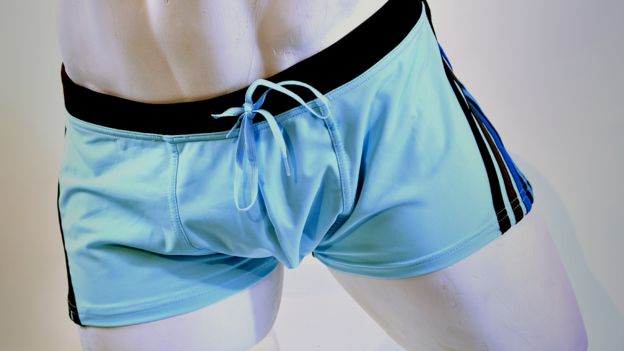


And with style there has also been speed.
A century on from the modesty of bloomers and soggy knitted costumes, the ability of swimwear to make us travel faster in water - as well as make us look good - is more important than ever.
These two final costumes were worn at two Summer Olympics.
On the right, the LZR Racer suit developed by Speedo is made from Teflon coated Lycra. It streamlines the body by reducing resistance through the water. It helped break dozens of swimming records in less than a year - and was eventually banned from competitive swimming after the 2008 Beijing Olympics.
On the left, the women's Team GB swimsuit from the 2012 London Games. Made from recycled nylon and spandex, it was designed by Stella McCartney and made by Adidas.
And gradually these types of technological innovations - mixed with a pinch of seaside styling - will eventually find their way to everyday costumes and trunks worn on the beach.
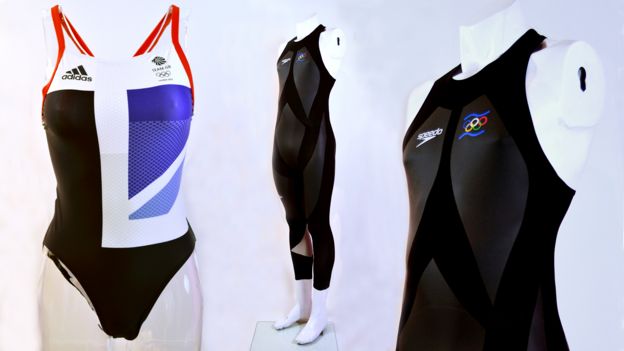
Riviera Style - Resort and Swimwear Since 1900 can be seen at the Fashion and Textile Museum in London until 30 August 2015.
All images subject to copyright. Top image copyright Leicestershire County Council Museums Service.
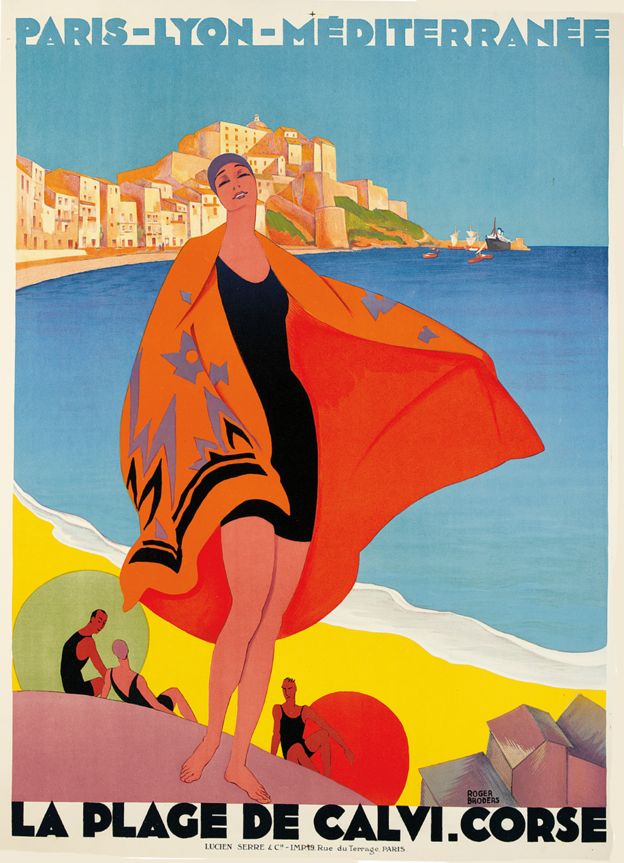

No comments:
Post a Comment